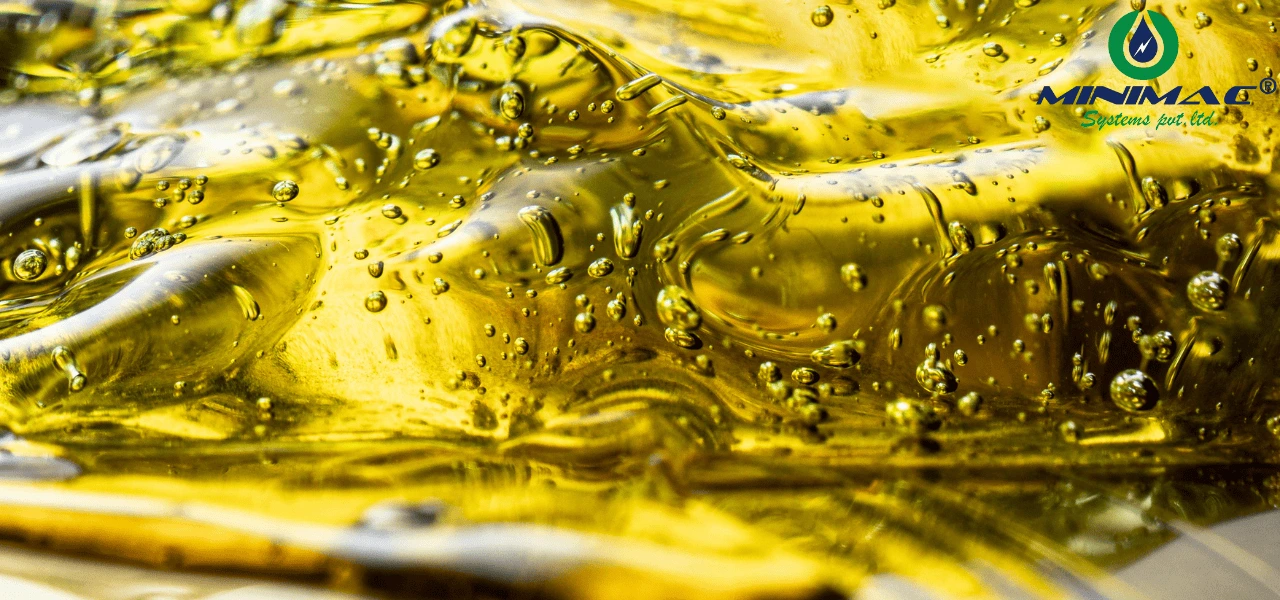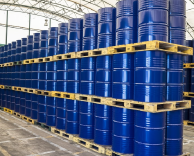What Is Viscosity? Definition, Types, and Key Differences Explained
What Is Viscosity?
Viscosity is an important property of fluids that describes how they resist motion. It is one of the most commonly used petroleum-based lubricants and is used in machine shop forges, automatic lathes, etc. Viscosity is the term used to describe the "thickness" or "thinness" of a fluid, or its resistance to flow. Viscosity knowledge is also important for choosing the right lubricant to provide smooth and efficient machinery operation, to avoid excessive wear and minimize maintenance expenses.
Viscosity right lubricants reduces friction among moving parts. leading to better machinery performance and a longer life. If the viscosity isn't a match, equipment might run hot, suffer high friction or have a failure. In this article, we will take a deep dive into viscosity, its various types and real-world uses, and how it impacts fluid performance.

Definition of Viscosity
Viscosity is a measure of how much a fluid resists flowing. A high viscosity fluid is thick and flows slowly; a low viscosity fluid is thin and flows rapidly. For instance, honey is more viscous than water. Lubrication is a major application of viscosity, as lubricants must form a film of sufficient strength to minimize wear between surfaces that move. The correct viscosity allows the lubricant to flow without unnecessary drag, while offering the right amount of protection to avoid harmful wear.
If we want to be scientific about it, viscosity is the force needed to overcome an internal solid-like resistance of the fluid as it moves at a certain rate. For dynamic viscosity and kinematic viscosity, this is often expressed in units of Pascal-seconds (Pa.s) and centistokes (cSt) in numerical order.
Viscosity Explanation and Meaning
The sense of viscosity applied to lubrication can be seen to be the characteristic of a fluid that determines how it behaves with respect to surfaces, in particular the way in which it inhibits friction and wear in moving machine parts.
If necessary, you would need to choose a lubricant based on the operating temperature and viscosity of the fluid. Lubricants that are too viscous at high temperatures may become overly viscous and they will not flow efficiently, which means waste energy. On the other hand, a lubricant that is too thin can fail to build up the necessary protective barrier, to the point of wear, overheating, or system malfunction.
Viscosity is not a fixed characteristic; it varies with temperature. Most fluids get thinner as they heat up, so as temperatures rise, they are more likely to flow. On the contrary, it increases its viscosity because, with the cold, the liquid is thickened and resists flowing. It's this temperature-dependent property that makes it important to select lubricants of the proper viscosity, which can perform the task under different operating conditions.
Types of Viscosity
There are generally two types of viscosity: kinematic viscosity and dynamic viscosity. These three types of fluid properties each contribute to defining the fluid's flow response in different settings.
Kinematic Viscosity
Kinematic viscosity quantifies a fluid's resistance to flow subjected to gravity. It is the ratio of dynamic viscosity to the density of fluid. Such viscous forcing is particularly useful in situations where the fluid is to flow in a gravitational field, such in, e.g., engines or hydraulic systems where fluid is to be forced against a gravitational force.
The kinematic viscosity is usually expressed in centistokes (cSt). Higher the kinematic viscosity, the thicker the fluid and the lower the kinematic viscosity, thinner is the fluid. Motor oils, for example, are evaluated according to their kinematic viscosity to ensure performance at a variety of temperatures.
Kinematic viscosity is an important parameter in the context of how fluids flow, especially lubricants and how they spread over machine surfaces (in particular, in situations where gravity has a significant influence on the flow of the fluid).
Dynamic Viscosity
Dynamic viscosity, also called absolute viscosity, is the variable that finds a fluid's resistance to flow when an external force is applied. It is widely used to express thickness or resistance to flow in the industrial world. Dynamic viscosity is the force (unit area) required to move a fluid layer at a certain velocity.
Dynamic viscosity is in the units Pascal17second (Pa.s) that can be converted to Poise (P). The larger the dynamic viscosity, the more the fluid will "resist" flow; the smaller the dynamic viscosity, the easier the fluid will flow.
For instance, the motor oil has a given dynamic viscosity value so that it can properly move and lube engine components when experiencing high pressure and temperature changes. The proper dynamic viscosity helps prevent the metal parts from grinding against each other, which can damage the engine.
Viscosity of Fluid: Why It Matters
The viscosity of a liquid is important in order to determine its good performance in some applications. Under lubricating conditions, the fluid has a viscosity that causes it to flow at the appropriate rate to provide an effective barrier between moving surfaces. The wrong viscosity can mean that the lubricant either cannot provide enough coverage to the machinery or is so tight that it will cause the machinery not to operate smoothly.
The efficiency is dependent on the viscosity of the fluid as well. The lower the viscosity of the fluid, the less energy is needed to pump and circulate it; the higher the viscosity, the more energy is needed due to increased friction. In industrial systems, fielding the proper viscosity also decreases operational expenses and allows for reduced downtime on equipment.
Viscosity determines how the fluid in a hydraulic system flows through pipes and valves. Fluids designed with viscosity to meet the needs of the system Fluids that are too thin lead to excessive wear of components while fluids that are too thick lead to poor performance \ Description \Durable \ Ideal for preventing leaks and rust in hydraulic systems \Contains an advanced additive package to \Remove water 2.5x better than moisture ingressin In the case of engines, oil viscosity plays a crucial role in lubricating moving parts to help keep the engine performing at peak and lasting a long time.

Viscosity Examples in Real-Life Applications
Engine Oil:The oil must provide adequate lubrication at high temperatures. For instance, you have multi-grade oils (such as 5W-30) that are supposed to do well when it is cold outside and when it is hot. The "W" is for winter and the number is the viscosity at low temperatures and the second number is the high-temp viscosity.
Grease in Bearings:Bearings must use a lube of proper viscosity to function. High-viscosity grease may offer the best wear protection, but the "heavy" grease may be too viscous to splash or flow to properly lubricate fast-moving bearings. Grease of low viscosity may have a good flowing property, but is unable to form a stable protection under heavy load.
Hydraulic Fluids:Hydraulic machines need fluid of exact viscosity so as to preserve pressure, performance. For example, when applied to hydraulic fluids for heavy equipment or construction vehicles, the fluids need to flow through the machine or over the surfaces of the equipment with as little resistance as possible, which would cause overheating or poor performance.
Dynamic vs Kinematic Viscosity
It is important to know the distinction between dynamic viscosity and kinematic viscosity which is critical for selecting the correct fluid for use in machinery or industrial applications:
- Dynamic Viscosity: which is used to measure fluid thickness, represents the flow resistance under applied force.
- Kinematic Viscosity: represents the fluid's resistance to flow under gravity, calculating both the viscosity and the density of the fluid.
Dynamic viscosity gives a better idea of how the fluid behaves under the influence of external forces, and kinematic viscosity is crucial for understanding how the fluid behaves under the influence of gravity.
Conclusion
Viscosity is an extremely important property in lubrication and fluid dynamics. The proper viscosity ensures that lubricants work effectively; the level of friction and wear between the moving components is kept low, extending the life of the equipment. The distinction between dynamic and kinematic viscosity is an important one when choosing fluids for various applications. When taking viscosity into account, companies can maximize equipment performance, minimize maintenance costs, and increase overall energy efficiency.
For More Information About Related Videos - Click Here
FAQs:
- Dynamic Viscosity – This quantifies how much resistance a fluid has to flowing when given an external force.
- Kinematic Viscosity – A measure of a fluid's resistance to flow under the influence of gravity, combining viscosity and density.
- Temperature: Higher temperatures decrease viscosity; lower temperatures increase it.
- Fluid Composition: Depends on molecules and additives.
- Pressure: In some fluids, higher pressure increases viscosity.
- Dynamic Viscosity: Measured in Pascal-seconds (Pa.s) using viscometers.
- Kinematic Viscosity: Measured in centistokes (cSt) using calibrated tubes under gravity.
- Reduces friction and wear
- Regulates machinery temperature
- Ensures energy efficiency
- Maintains proper flow and pressure





